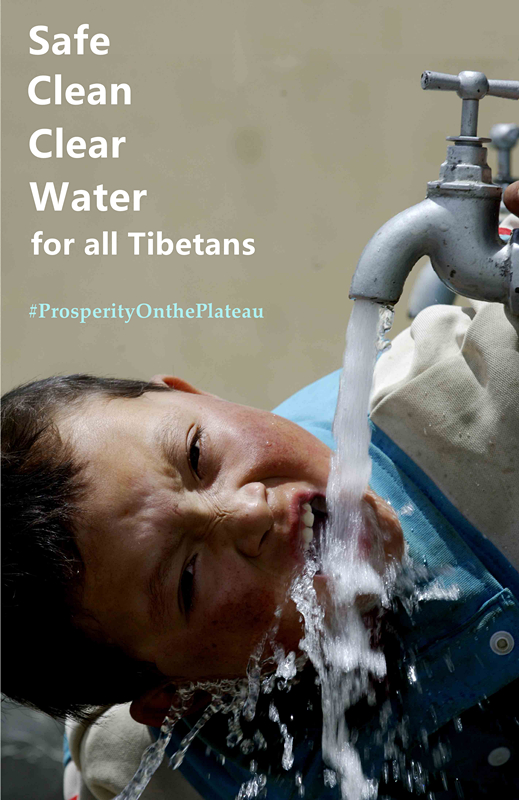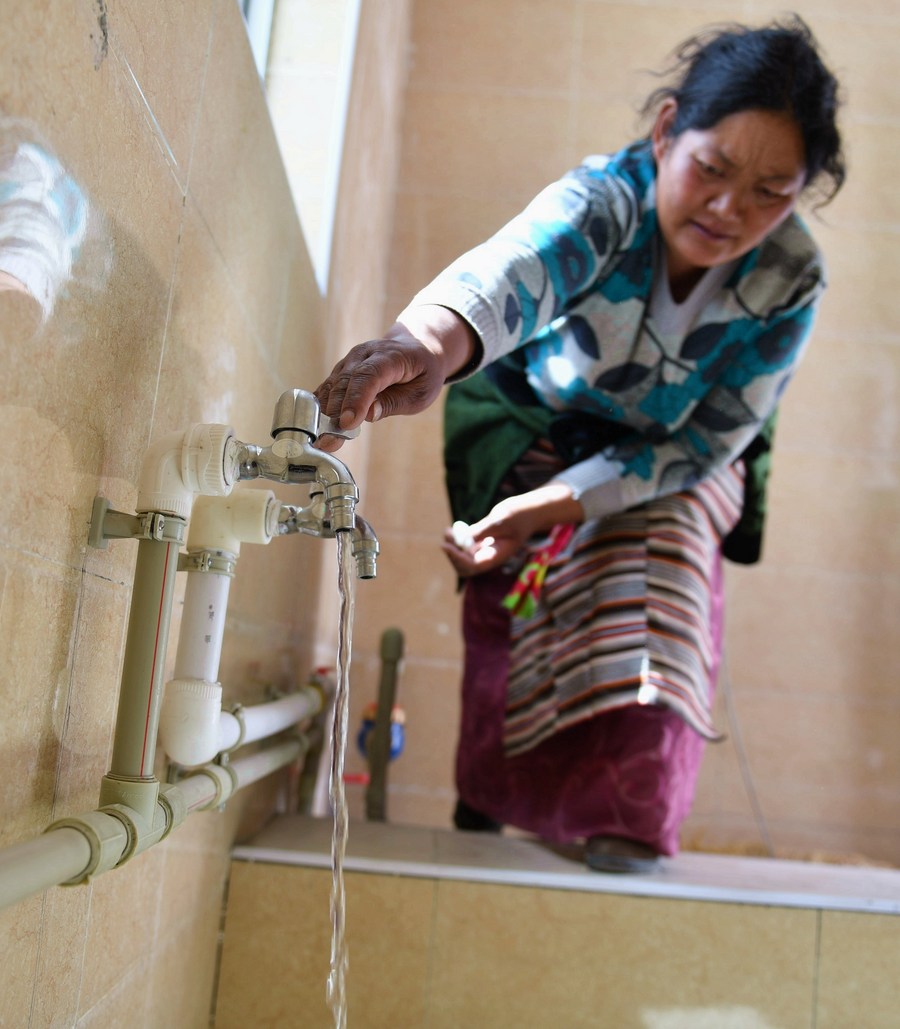From 2016 to 2020, Tibet Autonomous Region in SW China invested 4.3 billion yuan (about 657 million U.S. dollars) in drinking water projects, improving 17,581 rural water projects. Now, clean drinking water has become a reality for around two million residents.

LHASA, Dec. 1 (Xinhua) -- Cering Zhoigar tied a "hada", the Tibetan ceremonial silk scarf, around the faucet, a traditional blessing in her modern home.
Cering's face lit up as clear water flowed through her fingers. "I won't have to fetch water in the middle of winter ever again."
The 30-year-old woman's family recently moved to their new home from Shuanghu, the world's highest county. For many rural women in Tibet, collecting water from outside wells is an arduous, albeit essential, task.
"I used to have to collect water from a ditch very far away from our home. It became a bit easier after I got a tricycle, but I still had to break the surface ice in winter. I could spend most of my day just doing this one task," said Cering.
Underdeveloped infrastructure across Tibet's vast agricultural and pastoral areas means a safe, stable supply of drinking water is a rarity for many who live there. So many rely on natural water. Despite the abundance of water on the Qinghai-Tibet Plateau, however, not all communities have easy access to natural water sources, and chronic conditions such as Kashin-Beck disease have been linked to excessive levels of arsenic, fluorine, and bacteria in some springs and wells.

A relocated resident pours water into a hot spring pool in Yangbajing Town of Damxung County in Lhasa, southwest China's Tibet Autonomous Region, Sept. 28, 2017. (Xinhua/Jigme Dorje)
Since the launch of safe water projects, clean drinking water has become a reality for around two million residents, according to Sun Xianzhong, head of the regional water conservancy department.
Starting in 2001, water towers have been installed across the region, and different water projects initiated to suit each of Tibet's 74 county-level areas.
Nyinmo Township in Banbar County benefited from frost-proof faucets that ensure water supply even during the coldest months. In Comai County, each village now has a reservoir, and remote or arid areas now have emergency water supply measures.
Safe drinking water is an integral part of the country's anti-poverty campaign.
From 2016 to 2020, Tibet invested 4.3 billion yuan (about 657 million U.S. dollars) in drinking water projects, improving 17,581 rural water projects, said Sun.
He said Tibet would soon have large-scale centralized water treatment plants and urban water networks expanded to nearby rural areas so that more people can drink safe, clean and clear water.■



